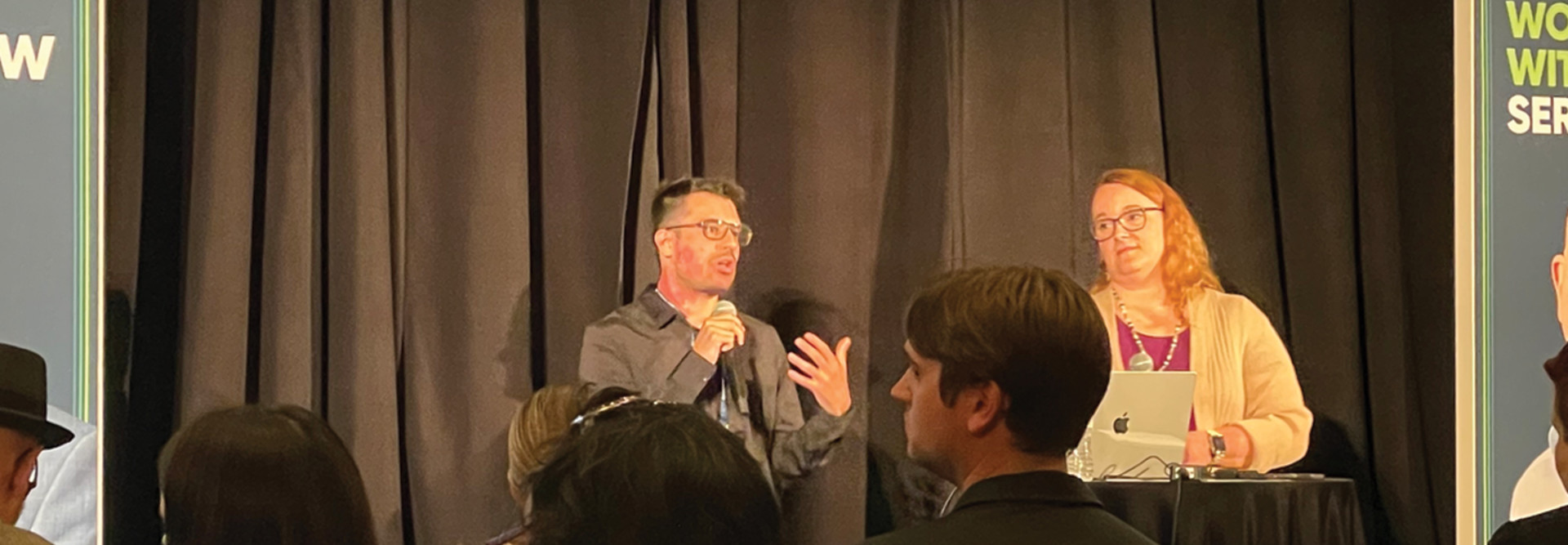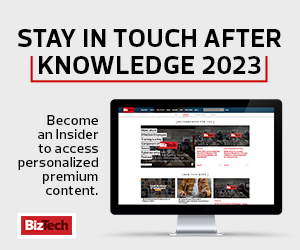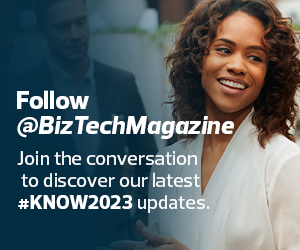Identifying Customers and What They Need
The first step to enacting digitally transformative solutions for customers is understanding who they are. “Every time we talk about customers, we think of external consumers, but what about your internal people? Aren’t they your customers too?” said CDW’s Fernando Castro Alvarez, a customer and industry workflows portfolio manager.
In a presentation Thursday, “People and Processes First: Crown Castle Teams Up with CDW for Transformation,” Castro Alvarez and Catherine Gosnell, operations program manager of small cell for Crown Castle USA, shared how digital transformation at the company began with a new understanding of who the business is serving.
“You need to learn about your people, about your processes and how they intertwine,” Gosnell said. “One of the things we started doing in our user groups was combining groups of people where their processes intertwined. When you do that, there are things that not only do they learn from the other groups but you learn about how their processes overlap.”
Once Crown Castle reframed how it was thinking about its customers, it was able to implement ServiceNow solutions to meet those customers’ needs. In doing so, one thing the Crown Castle team recognized was the importance of scalability.
“Right now, it’s just the IT team, so I’m just going to think about ITSM” is the wrong mindset for scalability, Castro Alvarez said.
Crown Castle was able to get buy-in for this process by involving end users during testing. While the team ultimately used the company’s roadmap as a North Star, it made users part of the transformation process, which ultimately improved their experience with the digital solutions.
LEARN MORE: Prioritize an improved experience for customers and end users.
Making these changes with customer experience and customer experience management in mind, the company achieved four significant results:
- New ways of doing business: Teams moved from disparate legacy apps to a single system where integrated data added context to their work.
- Improved support: It resolved customer problems proactively through simplified processes, the removal of swivel-chair work and a more personalized understanding of users.
- Reduced spend: New systems allowed teams to forecast work more accurately and eliminate manual, disjointed processes through automation.
- Transformed customer experience: Crown Castle’s business groups are engaged in a customer-centric framework that more easily supports all users from a single pane of glass.
The Customer Experience Through Simplified Procurement Processes
One way digital transformation enables a seamless customer experience is by simplifying the process of getting technology into end users’ hands. Investing in solutions like eProcurement allows all branches of your organization to operate with efficiency.
CDW shared Wednesday how ServiceNow supports electronic procurement in a session titled “Streamline Your IT Hardware Purchases with CDW's ePro.” Certified Master Architect Kelli Hoeppner and Field Solution Architect Tom Horton of CDW explained how eProcurement automates the procurement lifecycle to simply the process for asset management teams.
With the benefits of a service catalog, auto-ordering and advanced shipping notices, organizations can improve data accuracy and reduce hours spent supporting the ordering and purchase order processes.
The team showed examples of how these various benefits worked, sharing screenshots of dashboards and services at various stages of procurement. The services simplified the task of getting technologies into end-users’ hands to change the experiences of both internal and external customers.













